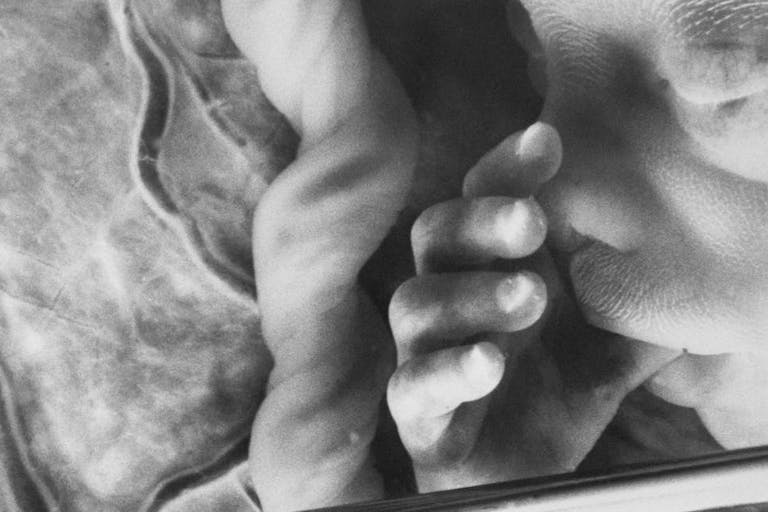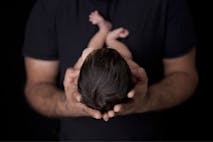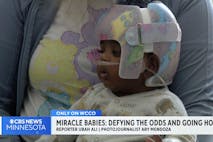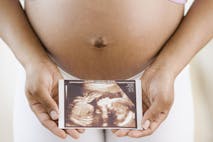
The Texas abortion plaintiffs don’t want clarification. They want the court to legislate.
Nancy Flanders
·
The science of fetal pain is an inconvenient truth for pro-abortion ideologues
When considering the current state of abortion law in the case of Dobbs v. Jackson Women’s Health Organization, oral arguments featured a discussion of an increased understanding of the science and advancements surrounding human development. For some, like the authors of a Washington Post op-ed, these advancements were uncomfortable and inconvenient. Op-ed authors Alison Gash and Joshua C. Wilson – both political science professors – attempt to dismiss these fetal science advancements as “dubious science,” the fruit of “investment in the politics of doubt” that has been “aimed at the courts.”
But the reality is that advancements in fetal science have been rooted in the scientific method, which involves asking questions and seeking answers in experiments with the aim of advancing our knowledge by producing replicable results that other scientists can verify. Nowhere has this been more evident than in scientific advancements on the critical question of when preborn babies can feel pain.
The science of fetal pain: Marginalized by abortion advocates, but rooted in sound science
To Gash and Wilson, advancements in the understanding of fetal pain are built on “marginalized science.” As the Post opinion piece notes, during oral arguments Justice Sotomayor argued that only a “gross minority of doctors… believe fetal pain exists before 24, 25 weeks.” In short, Gash and Wilson summarized Sotomayor’s position: “The claims of fetal pain lack scientific rigor and professional acceptance.”
It is true that supporters of legalized abortion have marginalized the research on fetal pain. Indeed, a portion of the medical community has turned a blind eye to the advancements in this area, including prominent professional organizations like the American College of Obstetricians and Gynecologists (ACOG). ACOG and other professional groups with a pro-abortion ideology have dismissed scientific advancements in the understanding of fetal pain out of hand without reference to recent developments. To ACOG, despite a growing body of research to the contrary, fetal pain is not possible before viability, defined as 24 weeks’ gestation, due to what the group argues is insufficient brain and nervous system development before viability.
In the case of fetal science, where advancements have made the study of the preborn baby’s development exponentially more precise, new observations have led many scientists to draw new conclusions and refine our understanding of when fetal pain begins. And when this happens, much to Gash and Wilson’s chagrin, this isn’t “investment in the politics of doubt” but rather pro-lifers coming to scientifically sound conclusions that dispute the pro-abortion ideology.
The medical community once widely believed newborn babies could not feel pain. As British physician Dr. Karen Raj noted, “It was a widely held belief that babies couldn’t experience or process pain because their brains were not fully developed, and any crying or flinching was just merely a reflex.” As the research behind neurodevelopment in newborns advanced, the medical community came to change clinical practice to reflect what new data showed. Today, it would be considered unthinkable to deny that newborns can feel pain.
Fetal pain: A rapidly expanding area of scientific research
The Charlotte Lozier Institute has compiled a fact sheet with 33 citations of peer-reviewed studies on fetal pain at 20 weeks’ gestation and earlier. Among the cited research is one study with a co-author who does not identify as pro-life, but who acknowledges “we no longer view fetal pain (as a core, immediate, sensation) in a gestational window of 12-24 weeks as impossible based on the neuroscience.” According to the study, “The two authors came together to write this paper through a shared sense that the neuroscientific data, especially more recent data, could not support a categorical rejection of fetal pain.”
READ: Doctors once denied born babies could feel pain. Abortionists denying fetal pain are wrong, too
“The unborn baby reacts to noxious stimuli with avoidance reactions and stress responses. … There is extensive evidence of a hormonal stress response by unborn babies as early as 18 weeks including ‘increases in cortisol, beta-endorphin, and decreases in the pulsatility index of the fetal middle cerebral artery,’” reads just a sampling of the medical findings cited by the Lozier Institute fact sheet. “Two independent studies in 2006 used brain scans of the sensory part of unborn babies’ brains, showing response to pain. They found a ‘clear cortical response’ and concluded there was ‘the potential for both higher-level pain processing and pain-induced plasticity in the human brain from a very early age.’”
What some have also pointed out is that ACOG’s position on fetal pain rests on a fundamentally questionable definition of pain. ACOG’s fact sheet quotes from an oft-cited article in the Journal of the American Medical Association (JAMA): “Pain is an emotional and psychological experience that requires conscious recognition of noxious stimulus.”
However, as an American Association of Pro-Life Obstetricians and Gynecologists (AAPLOG) fact sheet points out, the JAMA authors had a “preceding bias” that make their definition unreliable and patently motivated by pro-abortion sympathies: author Dr. Eleanor Drey was the medical director at an abortion facility at the University of California San Francisco (UCSF), and author Susan Lee had previously practiced as a NARAL attorney.
As AAPLOG points out, “The intent of the study is readily apparent from the first paragraph, where the authors discuss legislative limitations on mid-trimester abortions, and they discount any concern for the fetus as they attempt to systematically dismantle all the observed fetal physiologic responses and attempt to explain how that does not actually represent pain as we know it.”
Viability: An arbitrary legal basis for abortion – nothing to do with science
Gash and Wilson blast pro-life attempts at calling into question using viability, defined as “the point at which a fetus could survive outside the uterus,” as the basis for legalized abortion. To Gash and Wilson, viability – which they state occurs at 23 to 24 weeks – is the only scientifically supportable standard. When Mississippi’s attorney general rejected using viability as a legal marker, the authors state that he was saying that “science wasn’t relevant.” But pro-lifers argue that the science of viability is a moving target and should never be used to justify abortion.
The current viability standard is commonly understood as the earliest point a baby could survive being born. That line was once set (arbitrarily, by a law clerk) at 24 weeks, based on the medical technology available in 1973. But as the field of neonatal medicine develops, that line has only moved in one direction. Legally enshrining it as 24 weeks has divorced the law from current medical standards. One day it could potentially be much earlier than we can imagine right now.
To give an example, medical advancements were once insufficient to save the son of the President of the United States. When Patrick Kennedy was born early at 37 weeks in August of 1963, despite every effort to save him, he tragically passed away due to respiratory distress after only two days of life. In the decades since, care around babies born prematurely and preborn babies in the womb has evolved by such leaps and bounds that babies are surviving when born at much earlier dates and much smaller sizes.
The op-ed written by political scientists Gash and Wilson turns out to be more of a political criticism rather than an engagement with the scientific ideas they call into question. Their argument seems designed to score political points, but they ignore important advancements in fetal science that prove to be inconvenient to their personal beliefs.
“Like” Live Action News on Facebook for more pro-life news and commentary!
Live Action News is pro-life news and commentary from a pro-life perspective.
Contact editor@liveaction.org for questions, corrections, or if you are seeking permission to reprint any Live Action News content.
Guest Articles: To submit a guest article to Live Action News, email editor@liveaction.org with an attached Word document of 800-1000 words. Please also attach any photos relevant to your submission if applicable. If your submission is accepted for publication, you will be notified within three weeks. Guest articles are not compensated (see our Open License Agreement). Thank you for your interest in Live Action News!

Nancy Flanders
·
Analysis
Cassy Cooke
·
Analysis
Nancy Flanders
·
Newsbreak
Angeline Tan
·
Human Interest
Nancy Flanders
·
Issues
Nancy Flanders
·
Human Interest
Laura Nicole
·
Human Interest
Laura Nicole
·
Newsbreak
Laura Nicole
·
Human Interest
Laura Nicole
·
Human Interest
Laura Nicole
·